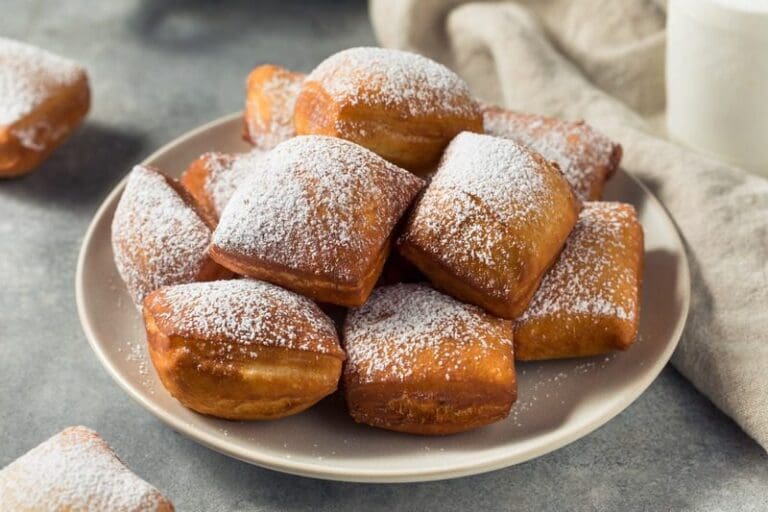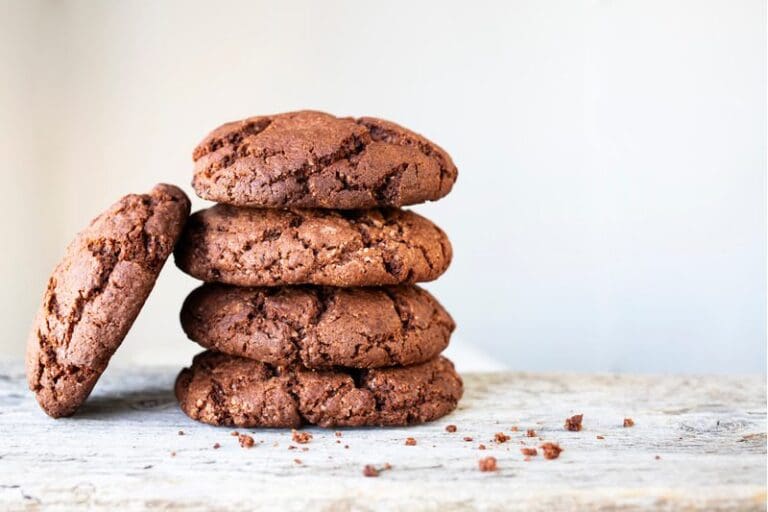Indulge in the irresistible allure of Fresh Orleans-style beignets—a dessert that will transport you straight to the vibrant heart of the Big Easy. The key to their pillowy texture lies in the yeasted dough, deep-fried to achieve a golden-brown exterior that is both crispy on the outside and light and airy on the inside. With the very first bite, you’ll be obsessed.
However, fair warning: these delectable treats are known to be incredibly addictive! Whether enjoyed alongside your morning coffee, savored as a delightful daytime snack, or relished as a sweet ending to a meal, New Orleans-style beignets are guaranteed to satisfy your cravings and leave you yearning for more.
This is a rather large recipe, and can be scaled up or down according to your needs.

New Orleans-Style Beignets
Ingredients
- 2 ¼ tsp active dry yeast
- 2/3 cup white granulated sugar
- 1 ½ cup warm water
- 2 whole eggs
- 1 cup evaporated milk
- 2 ½ tsp vanilla extract
- 7 cups bread flour
- 5 Tbsp unsalted butter
- 1 ½ tsp kosher salt
- 10 cups of vegetable oil, for frying beignets
- 2 cups powdered sugar
Instructions
- In a bowl, combine yeast, sugar, and warm water, giving it a gentle stir to ensure everything is well mixed.
- Place the mixture in the refrigerator for approximately ten minutes, or until it becomes bubbly and foamy—a sign that the yeast is actively working its magic.
- Using an electric mixer fitted with the paddle attachment, beat the eggs until smooth in a separate bowl.
- Add the evaporated milk and vanilla to the eggs.
- Continue to mix well, until all of the ingredients are fully incorporated.
- Gradually blend in 3 and ½ cups of flour, ensuring a smooth consistency.
- Reduce the mixer's speed to low and whip the mixture until it becomes smooth.
- While the mixer is still running, gradually add the butter until fully incorporated.
- Lastly, incorporate kosher salt and the remaining three and a half cups of flour.
- *It should take roughly three minutes of mixing to achieve a smooth and cohesive dough.
- Transfer the dough to a bowl, tightly cover it with plastic wrap, and refrigerate for at least two hours, or up to twenty-four hours, allowing the flavors to develop.
- Prepare a baking sheet by lining it with three layers of paper towels and setting it aside.
- In a large enameled cast-iron pan, heat four inches of oil to 360F.
- Retrieve the chilled dough from the refrigerator and roll it out on a lightly dusted surface, creating a ¼” thick rectangle.
- Cut the dough into 2.5” squares.
- Carefully fry the dough in batches for approximately one minute, or until each beignet puffs up and turns a beautiful golden-brown color.
- Use a slotted spoon to transfer the cooked beignets to the prepared baking sheet.
- Repeat this process with the remaining dough, frying it to perfection.
- Once the beignets are ready, it's time to dust them generously with powdered sugar and enjoy them immediately while they are still warm!





